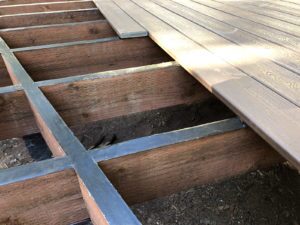
Adding a fence is one of the best ways to protect your vegetable garden from pests. Rabbits, groundhogs, and other furry creatures can damage your crops. Here are some options for creating a fence in order to keep these animals away. These tips can help protect your plants from being damaged by animals. Use different colors of slats to make your vegetable garden stand out.
Insects can cause damage to your vegetables. Netting can help keep your pets safe from pests like deer or rabbits. This fence is not very visually appealing but will keep your garden safe from small animals such as rabbits. The fence will keep animals from your yard, and it will also be attractive. A few other options include using pallets as fencing. Once you have the pallets, it is possible to build a gate made from them.

Free materials can be found online for those who can't afford fences. Newspaper ads are another source of free material. Another option is to create your own fence. Lattice panels can be purchased at your local building material retailer. These fences can be easily built and support climbing vegetables. You can also make small openings in the fence, to keep insects out of your garden. By using a fence, you can also make your garden more beautiful and deer-proof.
A fence can also be used as a feature or wall. A fence can be painted in bold colors and a unique pattern to make it a focal point. Another great option is the picket design. This keeps animals out and lets you see your vegetable garden from a clear view. Moreover, this type of fencing is a great choice if you want to section off a vegetable patch or enhance privacy. It is important to select a design which complements your home.
Installing a fence will protect your vegetables against predators. A wooden fence can be used or vinyl or wrought-iron pickets. A wooden fence will be more durable and will require less maintenance. It will also keep out animals. For vegetables, a chicken wire mesh fencing is an option. The fence will bend inwards if an animal attempts climbing it.

A fence can be another way to protect your veggies from predators. Many garden pests, such as rabbits or deer, like fresh produce. Therefore, a fence can help protect you vegetables. For your vegetable garden, you can use chicken wire or bamboo if there are chickens. You can even install a barrier for animals by installing a mesh that is 3 feet high or higher. These materials will block most animals from reaching your plants.
FAQ
Is it possible to live in a house that is being renovated?
Yes, I can live inside a house while I renovate it.
Is it possible to live in a house with renovations going on? The time taken to complete the work will impact the answer. If the renovation process takes less than 2 months, then your home can be lived in while it's being renovated. You cannot live in the home while renovations are taking place if they last more than 2 months.
Because of the possibility of falling objects, you shouldn't live in your home while a major construction project is underway. Noise pollution and dust from heavy machinery on the job site could also be a problem.
This is especially true when you live in a multistory house. In such cases, vibrations and noises from construction workers may cause irreparable damage to your property.
As I mentioned before, while your home is being remodeled, you'll have to manage the inconveniences of living in temporary shelters. This means you won't be able to use all the amenities in your own home.
For example, you will not be able to use your washing machine and dryer while they are undergoing repair. It will be difficult to bear the smell of paint fumes as well the sounds that workers make.
All these factors can lead to stress and anxiety among you and your family members. It is therefore important to plan ahead so that you don't end up feeling overwhelmed by the situation.
To avoid costly mistakes, do your homework before you make any decisions about renovating your home.
Also, it is a good idea to get professional help from a reputable contractor in order for everything to go smoothly.
What should you consider when buying your next home?
Be sure to have enough money in reserve for closing costs before you purchase a new home. You might consider refinancing your mortgage if you don't have enough money.
Can I rent a dumpster?
A dumpster can be rented to dispose of your debris after you have completed your home renovation. Renting a dumpster will help you keep your yard clear of debris and trash.
How to quickly sell my home without having to pay realtor fee?
It is important to start looking for buyers as soon as possible if you wish to quickly sell your home. This means that you should accept any offer from the buyer. Waiting too long can lead to losing out on buyers.
How many times should I change my furnace's filter?
It all depends on how frequently your family uses your home heating system. You may need to change your filter more frequently if the temperature drops and you plan on being away from home during colder months. If you are not likely to leave your house for long periods of time during cold weather months, you might be able make more frequent changes.
A typical furnace filter lasts approximately three months. This means that your furnace filters should be changed every three to four months.
You can also check the manufacturer's recommendations for when to change your filter. Manufacturers recommend changing your filter after each heating season. Other manufacturers suggest waiting until visible dirt builds up.
Can I remodel my whole house by myself?
If you can do it yourself, why pay someone else when you could save money and time?
It doesn't matter how much you love DIY, there are times when you simply cannot do it yourself. It may be impossible to control the many variables.
A qualified electrician would be required to check the safety and reliability of your electrical system if you live in an older house.
You also need to consider the fact that you might not be able to handle any kind of structural damage that might occur during the renovation process.
In addition, you might not have the tools necessary to complete the job properly. For example, if your goal is to install a new sink in your kitchen, you will need to purchase a plumber’s snake, which is designed to clear blocked pipes.
Plumbing codes also require that you have a licensed plumber work on your project.
You must be confident in your abilities before you attempt such a difficult task.
If you aren't sure if you have the skills or knowledge to tackle the task, get help from your family and friends.
They can advise you on the steps you should take and where to look for further information.
Are permits necessary to renovate my property?
Yes, you will need permits before starting any home improvement project. In most cases, you will need both a plumbing and building permit. You might also require a zoning permission depending on which type of construction is being undertaken.
Statistics
- Most lenders will lend you up to 75% or 80% of the appraised value of your home, but some will go higher. (kiplinger.com)
- They'll usually lend up to 90% of your home's "as-completed" value, but no more than $424,100 in most locales or $636,150 in high-cost areas. (kiplinger.com)
- It is advisable, however, to have a contingency of 10–20 per cent to allow for the unexpected expenses that can arise when renovating older homes. (realhomes.com)
- ‘The potential added value of a loft conversion, which could create an extra bedroom and ensuite, could be as much as 20 per cent and 15 per cent for a garage conversion.' (realhomes.com)
- The average fixed rate for a home-equity loan was recently 5.27%, and the average variable rate for a HELOC was 5.49%, according to Bankrate.com. (kiplinger.com)
External Links
How To
How do I plan a whole-house remodel?
It takes careful planning and research to plan a complete house remodel. Before you begin your project, there are many things to think about. First, you must decide what type of home improvement you want. There are many categories that you could choose from: kitchen, bathroom or bedroom; living room or dining room. Once you have decided which category you wish to work in, you will need to determine how much money you have to spend on your project. If you don't have experience with working on houses, it's best to budget at minimum $5,000 per room. If you have some experience, then you might be able to get away with less than this amount.
Once you've determined the amount of money you can spend, you need to decide how large a job you want. You won't be capable of adding a new floor, installing a countertop, or painting the walls if your budget is limited to a small remodel. You can do almost everything if you have enough cash for a full-scale kitchen renovation.
Next, find a contractor who is skilled in the type and scope of work you wish to undertake. You will be able to get great results and avoid a lot more headaches down in the future. You should begin gathering materials and supplies after you've found a competent contractor. You may need to purchase everything from scratch depending on the size and scope of your project. However, it is possible to find everything you need in a variety of shops that sell premade items.
Once you've collected all the materials you will need, you can begin to plan. You will first need to sketch out an outline of the areas you plan to place appliances and furniture. Next, plan the layout. It is important to allow for electrical and plumbing outlets. You should also place the most frequently used areas closest to the front door, so visitors have easy access. Final touches to your design include choosing the right colors and finishes. Keep your designs simple and in neutral tones to save money.
Now that you're finished drawing up your plan, it's finally time to start building! Before you start any construction, be sure to check the local codes. Some cities require permits while others allow homeowners to build without one. First, remove all walls and floors. The next step is to lay plywood sheets on your new flooring. You will then attach or nail pieces of wood together to make the cabinet frame. Finally, attach doors to the frame.
After you're done, there are still a few things you need to do. Covering exposed pipes and wires is one example. This can be done with plastic sheeting and tape. You'll also want to hang pictures and mirrors. You should always keep your work area clean.
You'll have a functional home that looks amazing and is cost-effective if you follow these steps. Now that you are familiar with how to plan a whole home remodel project, it is time to get started.